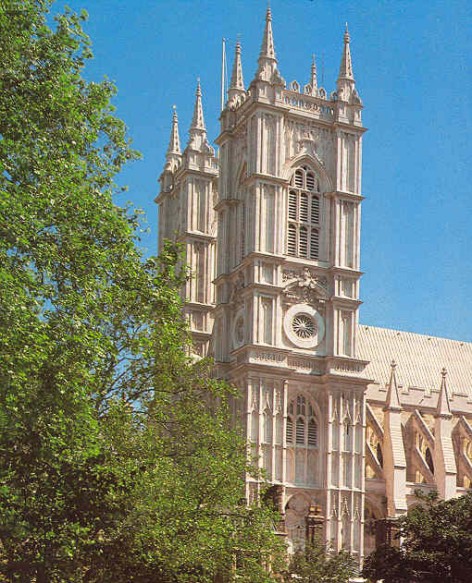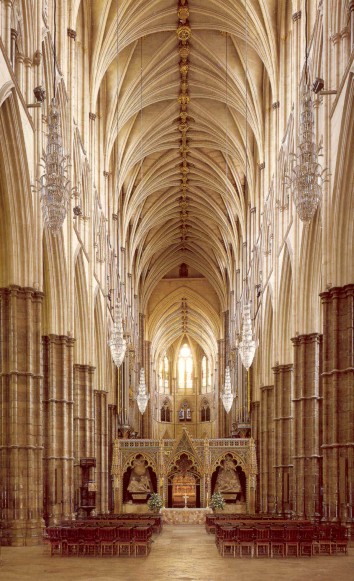


Westminster Abbey, a work of architectural genius, a locus of daily worship, deploying the resources of high musical expertise, a burial place of kings, statesmen, warriors, scientists, musicians and poets is the result of a process of development across the centuries, which represents the response of a monastery and later a post-Reformation church to the stimulus and challenge of its environment.
King Edward the Confessor, a curious and in some ways a remote English monarch, the last of the Anglo-Saxon kings sought to re-endow and greatly enlarge a Benedictine monastery on Thorney Island close to his palace of Westminster. Unfortunately, when the church was consecrated on 28 December 1065 he was not present, and died a few days later. His mortal remains were entombed behind the High Altar.

Among the most famous ceremonies that occurred in the Norman Abbey were the coronation of William the Conqueror on Christmas day, 1066, a grim proceeding which taxed all his resources of nerve and endurance and the canonisation of King Edward the Confessor in 1161.
The Norman Abbey was destined to survive for only two centuries. In the middle of the 13th century, King Henry III decided to pull down the Norman Abbey and rebuild it in a new architectural design. It was a great age for cathedrals: in France it saw the construction of Amiens, Evreux, Chartres, and in England Canterbury, Winchester and Salisbury, to mention a few. King Henry III briefed his architect, Henry de Reyns and sent him abroad to study the contemporary developments in architecture. Under the decree of the King of England, Westminster Abbey was designed to be not only a great abbey and a place of worship, but also a place for the coronation and burials of monarchs.
Every monarch, since King William the Conqueror with the exception of King Edward V and King Edward VIII was crowned in the Abbey. It was natural that King Henry III should wish to translate the body of the saintly Edward the Confessor into a more magnificent tomb behind the High Altar. Where King Edward is buried, kings and their consorts cluster around King Henry III, the second founder of the Abbey; King Edward I; King Richard II; King Henry V under his Chantry Chapel, and a galaxy of others. Thus began a process which has continued to this day. Over three thousand people are either buried or memorialised in Westminster Abbey. Notable among these is the Unknown Warrior, whose grave, close to the west door, has become a place of pilgrimage.

Little remains of the original medieval stained glass, once one of the Abbey's chief glories. The great west window and the rose window in the north transept date from the early eighteenth century but the remainder of the glass is nineteenth and twentieth century.
History did not cease with the passing of the medieval monastery at the Reformation. Queen Elizabeth I, buried in one of the apsidal chapels of King Henry VII, refounded the Abbey as a Collegiate Church, a Royal Peculiar not subject to the rule of any bishop with the Sovereign as Visitor, and laid down its constitution in a charter granted in 1560. Thus the Abbey was reshaped and newly patterned to discharge a distinctive yet worshipful role in a modern age. The monastic Community had now gone, and was replaced by a Dean and twelve prebendaries, minor canons and a large lay staff.

